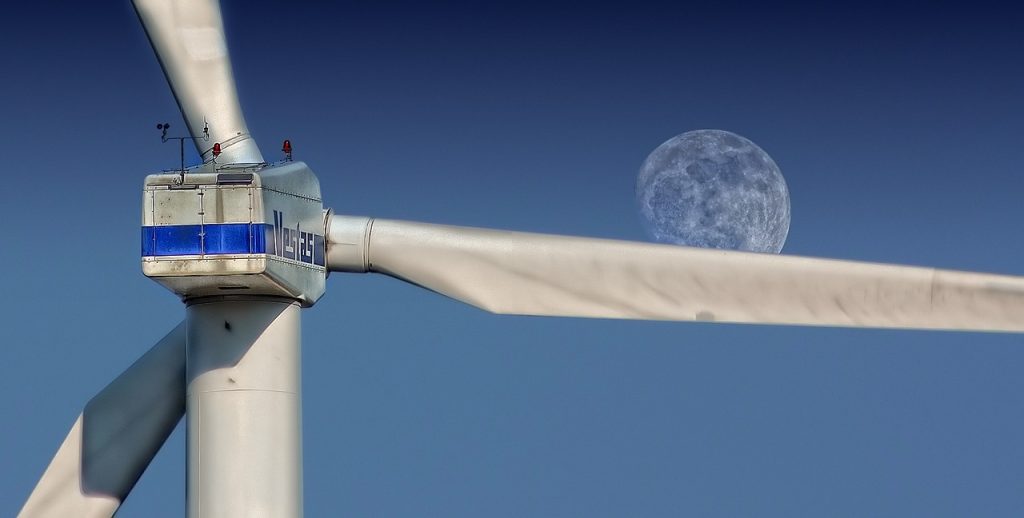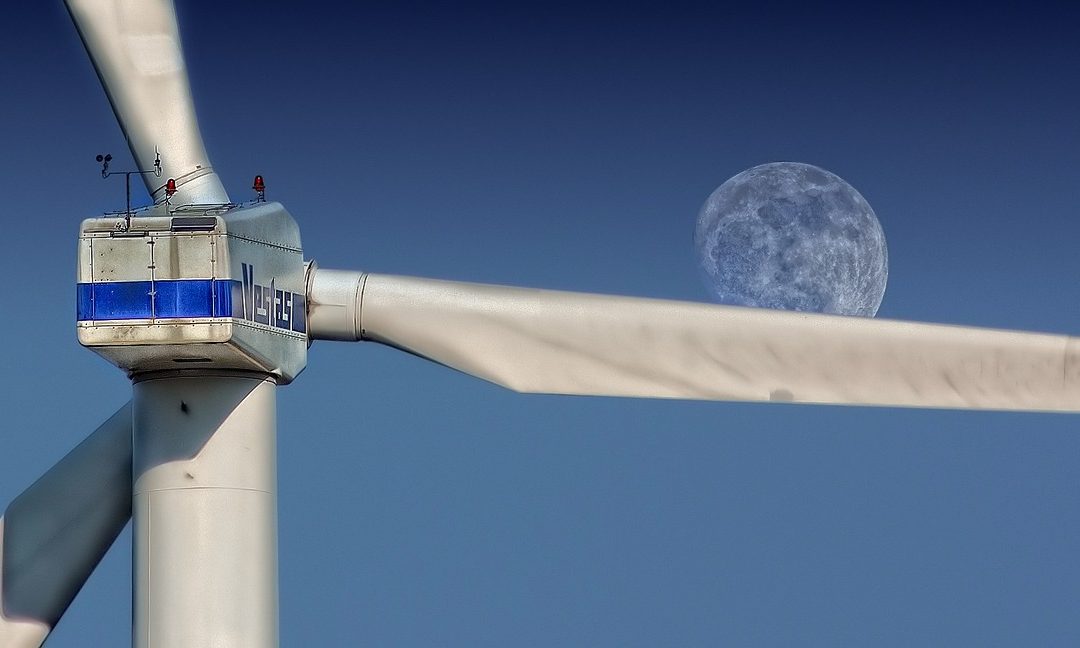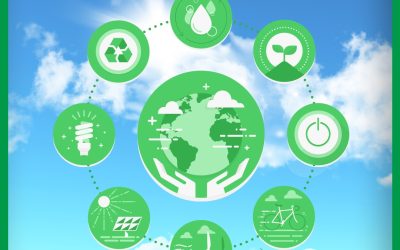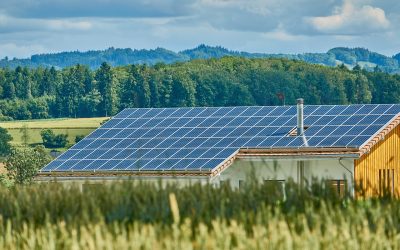Imagine a future where the constant demand for new power plants and infrastructure becomes a thing of the past. A world where our existing resources are optimized to their fullest potential, offering us a more sustainable and efficient way of meeting our energy needs. The concept of “Less Need For New Power Plants And Infrastructure” envisions just that – a shift towards utilizing our existing energy sources in smarter ways, minimizing the need for costly and environmentally impactful expansions. In this article, we explore the benefits and possibilities of this innovative approach, as well as the challenges that lie ahead.
Advancements in Energy Efficiency
Introduction of Energy-Efficient Technologies
Energy efficiency has become a significant focus in recent years, and advancements in technology have played a crucial role in improving energy efficiency across various sectors. From the industrial to the residential sphere, energy-efficient technologies have made significant strides in reducing energy consumption and minimizing environmental impact.
One notable development has been the introduction of smart appliances and devices that are specifically designed to optimize energy usage. These devices are equipped with advanced sensors and algorithms that enable them to adapt to users’ habits and adjust their energy consumption accordingly. This not only reduces the amount of energy wasted but also leads to cost savings for consumers in the long run.
Improved Performance and Efficiency of Existing Power Plants
While the development of renewable energy sources is crucial for a sustainable future, it is equally important to maximize the efficiency of existing power plants. Advancements in power plant technology have allowed for improved performance and energy efficiency, reducing the need for new power plants and infrastructure.
One significant development in this area is the application of newer, more efficient technologies to existing power plants. Upgrading boilers, turbines, and other components can significantly increase the overall efficiency of a power plant, resulting in reduced fuel consumption and emissions. Improved performance and efficiency of existing power plants help optimize the use of available resources and reduce the strain on the environment.
Effective Demand-Side Management Strategies
Energy efficiency is not limited to technological advancements; it also involves effective management of energy demand. Demand-side management strategies aim to reduce energy consumption during times of peak demand, thus avoiding the need for new power plants and infrastructure to meet the increased energy needs.
One example of effective demand-side management is the implementation of time-of-use pricing. By adjusting electricity prices based on the time of day, consumers are encouraged to shift their energy usage to off-peak hours when demand is lower. This not only helps balance the load on the grid but also incentivizes users to reduce their overall energy consumption.
Renewable Energy Sources
Increasing Utilization of Solar Energy
Solar energy has emerged as one of the most promising renewable energy sources in recent years. Advances in solar panel technology have greatly improved their efficiency and reduced the cost of installation, making solar energy more accessible to individuals and businesses alike.
The increasing utilization of solar energy is driven by several factors. Governments and organizations worldwide are providing incentives and subsidies to promote solar energy adoption. Additionally, the falling cost of solar panels and associated equipment has made it a financially viable option for many. Solar energy provides a clean and abundant source of power, making it a key player in reducing reliance on traditional energy sources and combating climate change.
Growing Wind Power Generation
Wind power generation has witnessed significant growth over the years, with an increasing number of wind farms being established worldwide. Advances in turbine technology and the utilization of wind as an abundant renewable resource have made wind power an attractive option for energy production.
Improvements in turbine design have allowed for increased energy capture from wind and higher electricity generation efficiencies. Additionally, the development of offshore wind farms has helped overcome land constraints and harness the full potential of wind power. As wind power generation continues to expand, the need for new conventional power plants is reduced, contributing to the overall sustainability of the energy sector.
Exploring Geothermal Energy Potential
Geothermal energy, derived from the heat stored within the Earth’s core, is an increasingly explored renewable energy source. Geothermal power plants generate electricity by harnessing the heat energy from underground reservoirs of steam or hot water. This renewable energy option has several advantages, including high reliability, low emissions, and the ability to provide baseload power.
Advancements in geothermal drilling techniques and the development of innovative power plant designs have made it possible to tap into previously inaccessible geothermal resources. By utilizing the Earth’s natural heat, geothermal energy reduces the reliance on fossil fuels and lessens the need for additional power plants and infrastructure.
Expanding Hydroelectric Power
Hydroelectric power has long been recognized as a reliable and clean energy source. With its ability to generate large amounts of electricity using water as fuel, hydroelectric power plays a significant role in reducing the need for new power plants.
Technological advancements in turbine and dam design have improved the efficiency and environmental impact of hydroelectric power plants. The construction of smaller-scale, run-of-the-river hydropower systems has also gained traction, minimizing the ecological footprint associated with large dams. As hydroelectric power continues to expand, it offers a sustainable and renewable alternative to traditional energy sources.
Harnessing Biomass Energy
Biomass energy utilizes organic matter such as wood pellets, agricultural waste, and dedicated energy crops to produce heat, steam, and electricity. This renewable energy source has gained attention due to its potential to reduce greenhouse gas emissions and provide a sustainable energy solution.
Advancements in biomass conversion technologies have significantly improved the efficiency and environmental benefits of biomass energy. Innovative processes such as pyrolysis and gasification allow for the production of clean-burning fuels, while anaerobic digestion converts organic waste into biogas. The harnessing of biomass energy reduces the need for fossil fuels and aids in the transition to a more sustainable energy landscape.

Energy Storage and Grid Optimization
Advancements in Battery Technology
Energy storage plays a crucial role in optimizing the use of renewable energy sources and enhancing the flexibility of the power grid. Advancements in battery technology have led to the development of high-capacity, cost-effective energy storage systems that can store excess energy for later use.
Lithium-ion batteries have become the industry standard for energy storage due to their high energy density and long cycle life. The falling costs of lithium-ion batteries, coupled with their ability to provide reliable and scalable energy storage, have made them a popular choice for renewable energy integration and grid optimization.
Deployment of Smart Grid Systems
Smart grid systems utilize advanced sensors and communication technologies to collect data and optimize the distribution of electricity. These intelligent systems enable real-time monitoring and control, improving the efficiency and reliability of the power grid.
By deploying smart grids, utilities can better manage energy demand, prevent power outages, and reduce overall energy waste. The integration of renewable energy sources with smart grids allows for seamless integration and efficient utilization of clean energy. This combination of advanced technology and renewable energy integration minimizes the need for new power plants and infrastructure.
Integration of Renewable Energy with Energy Storage
The integration of renewable energy sources with energy storage technologies is essential for achieving a reliable and resilient power system. By pairing renewable energy generation with energy storage solutions, the intermittent nature of renewables can be mitigated, ensuring a continuous supply of electricity.
Energy storage systems, such as batteries and pumped hydro storage, can store excess energy during periods of high generation and release it during times of high demand. This matching of supply and demand helps balance the variability of renewable energy sources and reduces the need for additional conventional power plants. The integration of renewable energy with energy storage technologies maximizes the utilization of clean energy and minimizes the strain on the power grid.
Enhancing Grid Flexibility and Resilience
Today’s power grids face increasingly complex challenges, including the integration of fluctuating renewable energy sources and the growing demand for electricity. To address these challenges and reduce the reliance on new power plants, enhancing grid flexibility and resilience is crucial.
Technological advancements in grid management systems allow for improved monitoring, control, and coordination of electricity supply and demand. Real-time energy management systems enable utilities to react promptly to changing conditions, optimize the utilization of existing assets, and mitigate potential power disruptions. By enhancing grid flexibility and resilience, the need for building new power plants and infrastructure can be minimized, leading to a more sustainable energy future.
Decentralized and Distributed Generation
Promoting Small-Scale Renewable Energy Systems
Promoting small-scale renewable energy systems is a key strategy to reduce the demand for new power plants and infrastructure. These systems, such as rooftop solar panels and small wind turbines, allow individuals and businesses to generate their own electricity on-site.
Government incentives, such as feed-in tariffs and net metering, have played a vital role in promoting the adoption of small-scale renewable energy systems. These incentives not only reduce the upfront cost of installation but also enable individuals to sell excess electricity back to the grid, leading to financial savings.
Encouraging Community-Based Energy Projects
Community-based energy projects empower local communities to take control of their energy production and consumption. These projects range from community-owned solar farms to cooperatives that invest in renewable energy infrastructure.
By encouraging community-based energy projects, the need for new power plants and infrastructure can be significantly reduced. These projects promote a sense of ownership and investment in renewable energy, leading to greater acceptance and adoption within the community.
Benefits of Distributed Generation
Distributed generation refers to the production of electricity from multiple small-scale energy sources located closer to the point of use. This approach reduces transmission and distribution losses, increases overall energy efficiency, and improves grid reliability.
With distributed generation, there is less need for new power plants and extensive transmission lines. The decentralized nature of distributed generation allows for a more resilient and self-sufficient power system, reducing the vulnerability to single-point failures.
Microgrids for Local Power Generation
Microgrids are localized energy systems that can operate independently or in connection with the main power grid. They often consist of distributed generation resources, energy storage systems, and advanced control technologies.
Microgrids provide a localized solution to energy needs, reducing the reliance on long-distance transmission and the need for new power plants. In times of natural disasters or grid failures, microgrids can operate autonomously and ensure a continuous power supply to critical facilities. The implementation of microgrids promotes energy independence and resilience at the local level.

Energy Conservation and Demand Response
Implementation of Energy Conservation Programs
Energy conservation programs aim to reduce energy consumption through various initiatives, including education and awareness campaigns, energy audits, and energy-efficient upgrades. These programs encourage individuals and businesses to adopt energy-saving habits and technologies.
By implementing energy conservation programs, the demand for electricity can be reduced, lessening the need for new power plants and infrastructure. Educating consumers about the importance of energy conservation and providing them with the necessary tools and resources can lead to significant energy savings and a more sustainable energy future.
Incentivizing Energy Demand Management
Energy demand management involves adjusting energy consumption patterns to align with available supply and ensure a stable grid operation. Incentivizing energy demand management encourages consumers to participate in demand response programs and shift their energy usage to off-peak hours.
By actively managing energy demand, the need for new power plants and infrastructure can be minimized. Incentives such as time-of-use pricing, renewable energy incentives, and demand response rebates motivate consumers to adopt energy-saving behaviors and contribute to a more balanced and efficient energy ecosystem.
Efficient Building Design and HVAC Systems
Buildings are significant consumers of energy, and optimizing their design and HVAC systems can result in significant energy savings. Energy-efficient building design incorporates features such as proper insulation, efficient lighting systems, and well-designed windows to minimize energy consumption.
Similarly, upgrading HVAC systems to high-efficiency models reduces energy waste and enhances indoor comfort. By promoting energy-efficient building design and encouraging the adoption of efficient HVAC systems, the demand for electricity can be reduced, leading to a decreased need for new power plants and infrastructure.
Maximizing the Potential of Demand Response
Demand response involves adjusting electricity usage in response to signals from the grid operator during periods of peak demand. By shifting energy consumption to off-peak hours or reducing non-essential loads, demand response programs help balance the supply and demand of electricity.
Maximizing the potential of demand response minimizes the need for additional power plants and infrastructure to meet peak demand. By actively participating in demand response initiatives, consumers can play an essential role in ensuring a stable and reliable power grid while also benefiting from potential cost savings.
Grid Modernization and Infrastructure Upgrades
Upgrading Aging Transmission and Distribution Infrastructure
The aging infrastructure of transmission and distribution networks poses challenges to the reliability and efficiency of the power grid. Upgrading these systems is crucial to accommodate the changing energy landscape and reduce the need for new power plants and infrastructure.
Replacing outdated equipment, enhancing transmission capacity, and implementing smart grid technologies are key components of upgrading the aging infrastructure. These improvements not only improve the overall efficiency of the power system but also enable the integration of renewable energy sources and enhance grid resilience.
Integration of Advanced Monitoring and Control Systems
Advanced monitoring and control systems provide real-time data and insights into the functioning of the power grid. These systems enable utilities to monitor and manage electricity flow, voltage levels, and frequency with greater precision.
By integrating advanced monitoring and control systems, utilities can respond promptly to fluctuations in supply and demand, ensuring a reliable and efficient power grid. This integration reduces the need for additional power plants and infrastructure by optimizing the utilization of existing assets and avoiding unnecessary investments.
Smart Meters and Energy Data Management
Smart meters are advanced devices that measure and record energy consumption at shorter intervals than traditional meters. These meters provide consumers with real-time information about their energy usage and promote energy-saving behaviors.
The deployment of smart meters enables utilities to gather accurate and timely data on energy consumption patterns, facilitating better demand forecasting and load management. Smart meter data, when combined with advanced analytics, can help identify energy-saving opportunities and optimize the operation of the power grid. By leveraging smart meters and efficient energy data management, the need for new power plants and infrastructure can be minimized.
Enhancing Resilience Against Cyber Attacks
With the increasing digitization of the power grid, enhancing cybersecurity measures is crucial to ensure the resilience of the energy infrastructure. Utilities must invest in robust cybersecurity systems and protocols to protect against cyber attacks that can disrupt the functioning of the power grid.
By enhancing resilience against cyber attacks, the risk of grid failures and power disruptions is minimized. This, in turn, reduces the need for additional power plants and infrastructure to maintain a reliable and secure power supply.

Collaborative Energy Sharing Platforms
Peer-to-Peer Energy Trading Networks
Peer-to-peer energy trading networks enable consumers to buy and sell electricity directly with one another. These platforms leverage blockchain technology to facilitate secure and transparent transactions, empowering individuals to become active participants in the energy market.
By enabling peer-to-peer energy trading, the need for centralized power plants and extensive transmission lines is reduced. Consumers can generate their own electricity using renewable energy sources and sell the excess to their neighbors, leading to a localized and sustainable energy ecosystem.
Virtual Power Plants
Virtual power plants are networks of distributed energy resources that are managed as a single entity. These resources, such as rooftop solar panels and energy storage systems, can be controlled and coordinated to meet the fluctuating energy demand.
Virtual power plants optimize the utilization of distributed energy resources and reduce the need for new power plants. By aggregating these resources, virtual power plants enhance grid stability, support renewable energy integration, and promote a decentralized and flexible energy system.
Blockchain-Based Energy Transactions
Blockchain technology has the potential to revolutionize energy transactions by enabling secure and transparent peer-to-peer exchanges. Blockchain-based energy transactions eliminate the need for intermediaries and reduce transaction costs, making it an attractive option for energy sharing platforms.
By leveraging blockchain technology, energy sharing platforms can facilitate efficient and reliable energy transactions, promoting the use of renewable energy sources and minimizing the need for new power plants and infrastructure.
Enabling Energy Sharing in Communities
Energy sharing platforms enable communities to collectively generate, store, and distribute renewable energy. By leveraging the resources available within the community, such as solar panels and energy storage systems, communities can become self-sufficient in meeting their energy needs.
By enabling energy sharing within communities, the need for new power plants and extensive transmission infrastructure is reduced. This collaborative approach not only promotes sustainability but also fosters a sense of community and shared responsibility towards the environment.
Energy Efficiency Policies and Incentives
Government Regulations and Standards
Government regulations and standards play a pivotal role in driving energy efficiency improvements across different sectors. By imposing energy efficiency requirements on appliances, buildings, and industrial processes, governments can ensure a minimum level of energy efficiency is achieved.
Additionally, the implementation of building codes and energy performance standards encourages the adoption of energy-efficient practices. Government regulations and standards create a level playing field and incentivize individuals and businesses to invest in energy efficiency measures. By setting the bar higher, these policies reduce the need for new power plants and infrastructure.
Financial Incentives for Energy Efficiency
Financial incentives are powerful tools for promoting energy efficiency. Government grants, tax credits, and subsidies can help individuals and businesses offset the upfront costs associated with energy-efficient upgrades and investments.
Financial incentives make energy efficiency more accessible and financially viable, encouraging a wider adoption of energy-saving measures. By incentivizing energy efficiency, the demand for electricity can be reduced, leading to a decreased need for new power plants and infrastructure.
Energy Performance Certifications
Energy performance certifications provide consumers with valuable information about the energy efficiency of buildings and appliances. These certifications, such as ENERGY STAR, indicate the level of energy efficiency and help consumers make informed choices.
By requiring energy performance certifications for buildings and appliances, governments can drive market demand for energy-efficient products. The availability of tangible information about energy efficiency promotes the adoption of energy-saving measures and reduces the need for additional power plants and infrastructure.
Mandatory Energy Audits and Reporting
Mandatory energy audits and reporting requirements compel large energy consumers, such as businesses and industries, to assess their energy usage and identify areas for improvement. These assessments help uncover energy-saving opportunities and guide the implementation of energy efficiency measures.
By making energy audits and reporting mandatory, governments can ensure that large energy consumers actively engage in energy conservation efforts. Resultant energy savings contribute to reducing the demand for electricity, lessening the need for new power plants and infrastructure.
Environmental Benefits and Sustainable Development
Reduced Greenhouse Gas Emissions
One of the primary environmental benefits of advancements in energy efficiency and the expanded utilization of renewable energy sources is the reduction in greenhouse gas emissions. Power plants that rely on fossil fuels emit significant amounts of carbon dioxide, a major contributor to climate change.
By improving energy efficiency and transitioning to cleaner energy sources, the amount of greenhouse gas emissions can be significantly reduced. This reduction in emissions helps mitigate climate change and promotes a cleaner and healthier environment for future generations.
Mitigating Climate Change
Advancements in energy efficiency and the adoption of renewable energy sources are crucial steps in mitigating climate change. By reducing reliance on fossil fuels and improving the efficiency of energy consumption, the overall carbon footprint can be minimized.
The reduction in greenhouse gas emissions resulting from these advancements contributes to the global effort to limit global warming and combat climate change. It is imperative that we continue to invest in energy efficiency and renewable energy to create a sustainable and climate-resilient future.
Preserving Natural Resources
Traditional energy sources like coal and natural gas require the extraction and combustion of finite resources. These processes can have detrimental impacts on the environment and deplete valuable natural resources.
By shifting towards renewable energy sources and adopting energy-efficient technologies, the demand for fossil fuels can be reduced, preserving precious natural resources. The preservation of natural resources ensures a sustainable future and minimizes the need for new power plants and infrastructure.
Promoting Clean and Healthy Environment
Advancements in energy efficiency and the expansion of renewable energy sources contribute to creating a clean and healthy environment. Renewable energy sources produce minimal or no harmful emissions, reducing air pollution and improving air quality.
Additionally, the adoption of energy-efficient technologies and practices reduces energy waste and minimizes the environmental footprint associated with energy production and consumption. Promoting a clean and healthy environment through energy efficiency and renewable energy leads to a more sustainable and livable planet.
Challenges and Future Prospects
Overcoming Infrastructure Limitations
While advancements in energy efficiency and renewable energy are promising, they still face challenges related to existing infrastructure limitations. The integration of renewable energy sources into the power grid requires upgrades and modifications to accommodate their intermittent nature.
Investments in infrastructure upgrades are essential to ensure the efficient integration and utilization of renewable energy sources. Upgrading transmission and distribution systems, increasing grid flexibility, and enhancing energy storage capabilities will be crucial in overcoming these infrastructure limitations.
Addressing Intermittency of Renewable Energy
Renewable energy sources such as solar and wind are inherently intermittent, as they depend on external factors like weather conditions and daylight availability. This intermittency poses challenges to the stable and reliable operation of the power grid.
Addressing the intermittency of renewable energy requires advancements in energy storage technologies and the development of effective demand response programs. By storing excess energy during periods of high generation and utilizing it during times of low generation, the intermittency of renewable energy can be mitigated, reducing the need for additional power plants.
Technological and Economic Considerations
Advancements in energy efficiency and the widespread adoption of renewable energy sources require substantial technological and economic considerations. Research and development efforts must focus on improving the performance and cost-effectiveness of energy-efficient technologies and renewable energy systems.
Additionally, the economic feasibility of these advancements plays a crucial role in their widespread adoption. Government policies and financial incentives should support the transition towards energy efficiency and renewable energy to ensure a smooth and economically viable transition.
Balancing Energy Demand and Supply
Balancing energy demand and supply is a significant challenge in the energy sector, especially as the world transitions towards cleaner energy sources. The intermittent nature of renewable energy sources and the variability in energy demand require effective strategies for load balancing.
Energy storage technologies, demand response programs, and grid optimization solutions are essential in balancing energy supply and demand. By effectively managing and optimizing the utilization of available resources, the need for new power plants and infrastructure can be minimized, ensuring a sustainable and reliable energy system.
In conclusion, advancements in energy efficiency and the expanded utilization of renewable energy sources are crucial steps towards a more sustainable energy future. From the introduction of energy-efficient technologies to the integration of renewable energy with energy storage, these advancements reduce the need for new power plants and infrastructure. Additionally, energy conservation, grid modernization, and collaborative energy sharing platforms contribute to a cleaner and healthier environment. While challenges remain, addressing infrastructure limitations and finding solutions to intermittency, technological, and economic considerations will pave the way for a balanced energy ecosystem. By embracing these advancements and working towards a balanced energy demand and supply, we can create a sustainable and resilient energy landscape for generations to come.










